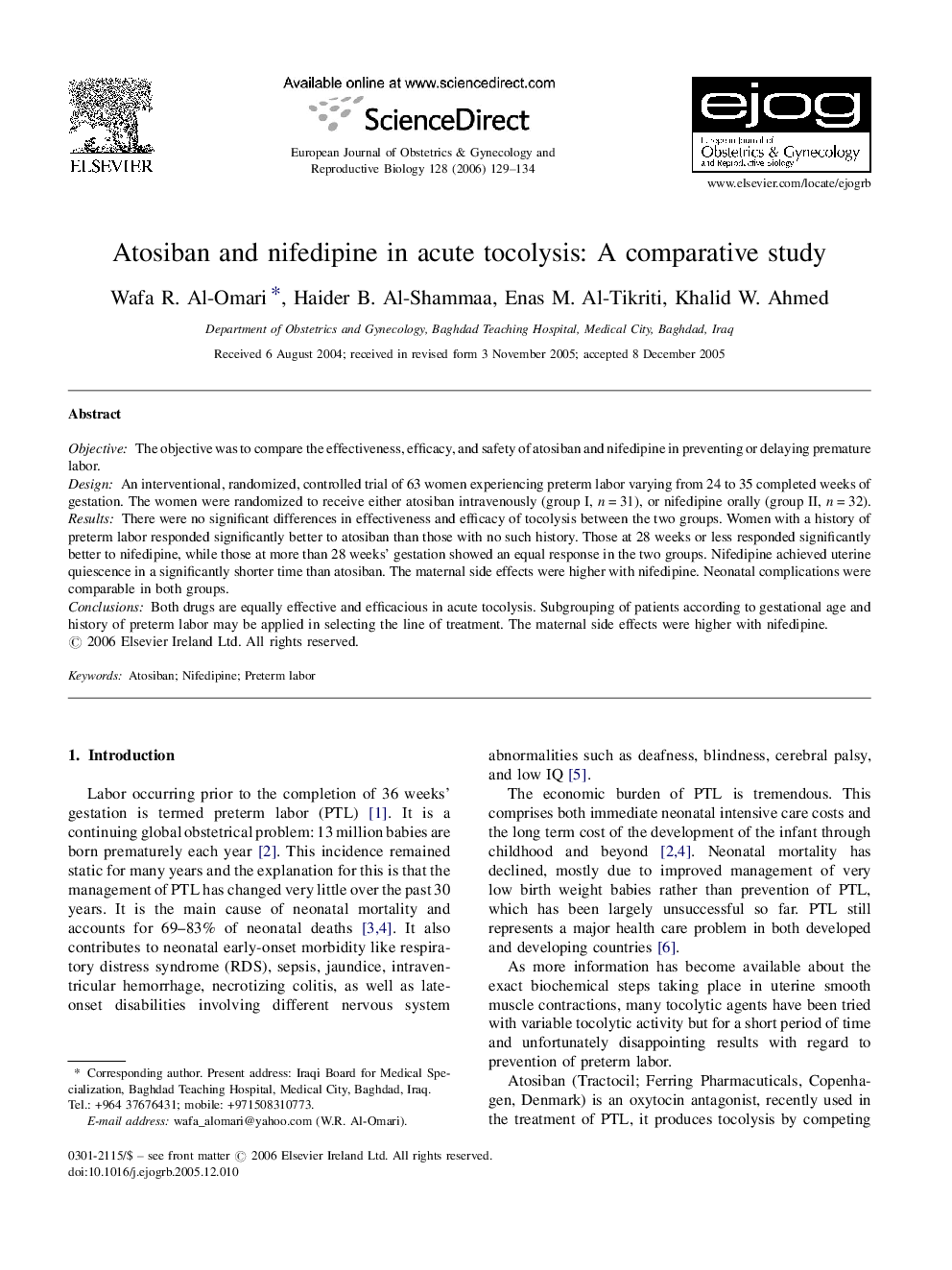| Article ID | Journal | Published Year | Pages | File Type |
|---|---|---|---|---|
| 3921725 | European Journal of Obstetrics & Gynecology and Reproductive Biology | 2006 | 6 Pages |
ObjectiveThe objective was to compare the effectiveness, efficacy, and safety of atosiban and nifedipine in preventing or delaying premature labor.DesignAn interventional, randomized, controlled trial of 63 women experiencing preterm labor varying from 24 to 35 completed weeks of gestation. The women were randomized to receive either atosiban intravenously (group I, n = 31), or nifedipine orally (group II, n = 32).ResultsThere were no significant differences in effectiveness and efficacy of tocolysis between the two groups. Women with a history of preterm labor responded significantly better to atosiban than those with no such history. Those at 28 weeks or less responded significantly better to nifedipine, while those at more than 28 weeks’ gestation showed an equal response in the two groups. Nifedipine achieved uterine quiescence in a significantly shorter time than atosiban. The maternal side effects were higher with nifedipine. Neonatal complications were comparable in both groups.ConclusionsBoth drugs are equally effective and efficacious in acute tocolysis. Subgrouping of patients according to gestational age and history of preterm labor may be applied in selecting the line of treatment. The maternal side effects were higher with nifedipine.
